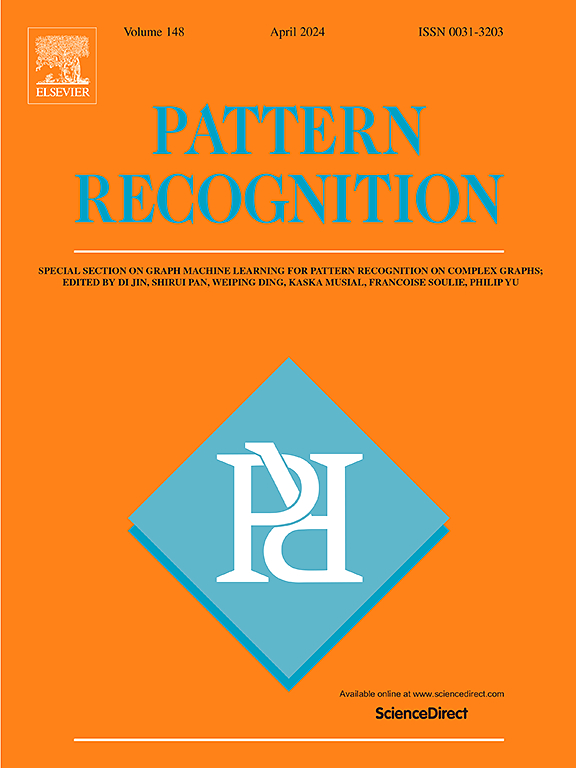Adaptive representation learning and sample weighting for low-quality 3D face recognition
IF 7.5
1区 计算机科学
Q1 COMPUTER SCIENCE, ARTIFICIAL INTELLIGENCE
引用次数: 0
Abstract
3D face recognition (3DFR) algorithms have advanced significantly in the past two decades by leveraging facial geometric information, but they mostly focus on high-quality 3D face scans, thus limiting their practicality in real-world scenarios. Recently, with the development of affordable consumer-level depth cameras, the focus has shifted towards low-quality 3D face scans. In this paper, we propose a method for low-quality 3DFR. On one hand, our approach employs the normalizing flow to model an adaptive-form distribution for any given 3D face scan. This adaptive distributional representation learning strategy allows for more robust representations of low-quality 3D face scans (which may be caused by the scan noises, pose or occlusion variations, etc.). On the other hand, we introduce an adaptive sample weighting strategy to adjust the importance of each training sample by measuring both the difficulty of being recognized and the data quality. This adaptive sample weighting strategy can further enhance the robustness of the deep model and meanwhile improve its performance on low-quality 3DFR. Through comprehensive experiments, we demonstrate that our method can significantly improve the performance of low-quality 3DFR. For example, our method achieves competitive results on both the IIIT-D database and the Lock3DFace datasets, underscoring its effectiveness in addressing the challenges associated with low-quality 3D faces.
用于低质量 3D 人脸识别的自适应表示学习和样本加权
在过去的二十年里,三维人脸识别(3DFR)算法利用面部几何信息取得了长足的进步,但这些算法大多侧重于高质量的三维人脸扫描,因此限制了其在现实世界中的实用性。最近,随着价格低廉的消费级深度摄像头的发展,人们的关注点转向了低质量的三维人脸扫描。在本文中,我们提出了一种低质量 3DFR 方法。一方面,我们的方法利用归一化流为任何给定的三维人脸扫描建立自适应形式分布模型。这种自适应分布表征学习策略可以更稳健地表征低质量三维人脸扫描(可能由扫描噪声、姿势或遮挡变化等引起)。另一方面,我们引入了自适应样本加权策略,通过衡量识别难度和数据质量来调整每个训练样本的重要性。这种自适应样本加权策略可以进一步增强深度模型的鲁棒性,同时提高其在低质量 3DFR 上的性能。通过综合实验,我们证明了我们的方法可以显著提高低质量 3DFR 的性能。例如,我们的方法在 IIIT-D 数据库和 Lock3DFace 数据集上都取得了具有竞争力的结果,这突出表明了我们的方法在应对与低质量三维人脸相关的挑战方面的有效性。
本文章由计算机程序翻译,如有差异,请以英文原文为准。
求助全文
约1分钟内获得全文
求助全文
来源期刊

Pattern Recognition
工程技术-工程:电子与电气
CiteScore
14.40
自引率
16.20%
发文量
683
审稿时长
5.6 months
期刊介绍:
The field of Pattern Recognition is both mature and rapidly evolving, playing a crucial role in various related fields such as computer vision, image processing, text analysis, and neural networks. It closely intersects with machine learning and is being applied in emerging areas like biometrics, bioinformatics, multimedia data analysis, and data science. The journal Pattern Recognition, established half a century ago during the early days of computer science, has since grown significantly in scope and influence.
 求助内容:
求助内容: 应助结果提醒方式:
应助结果提醒方式:


